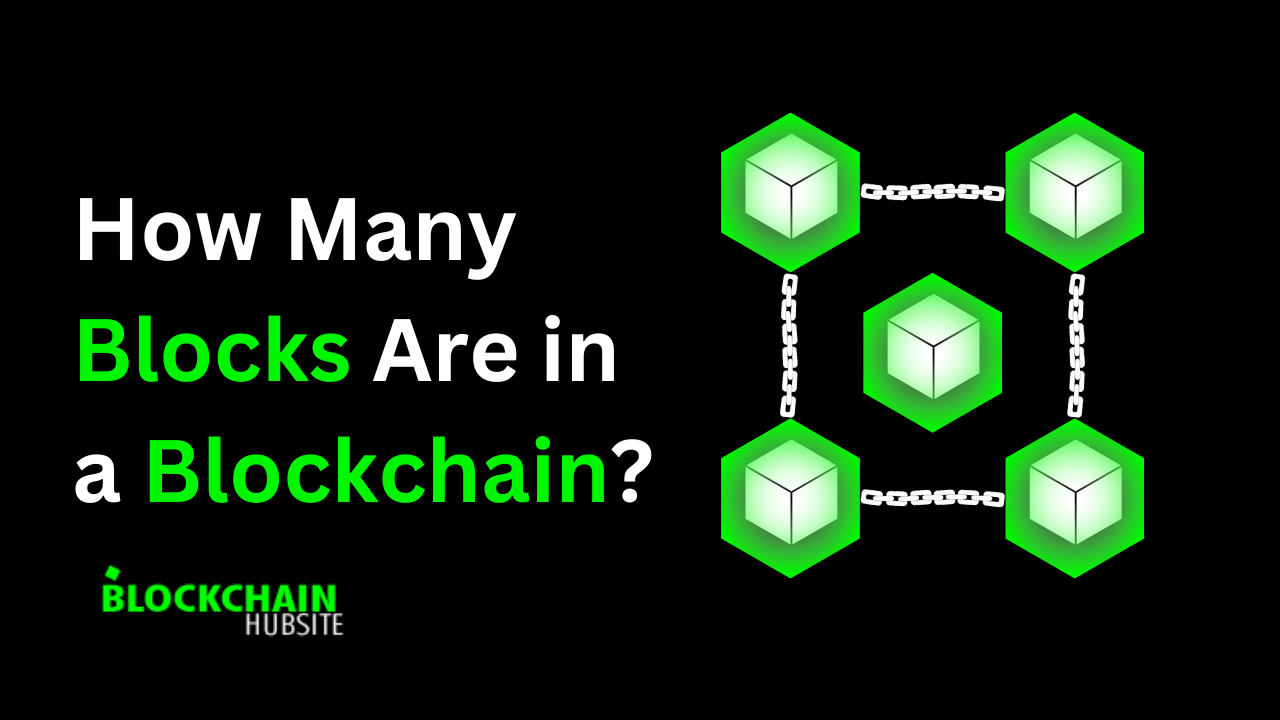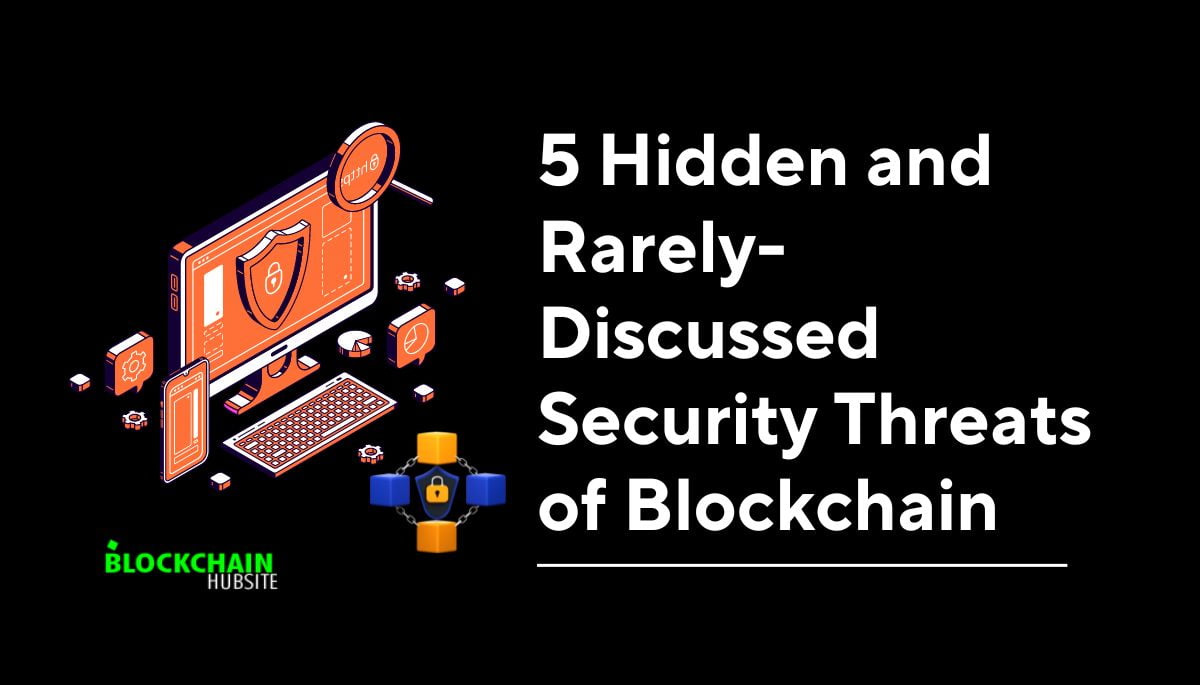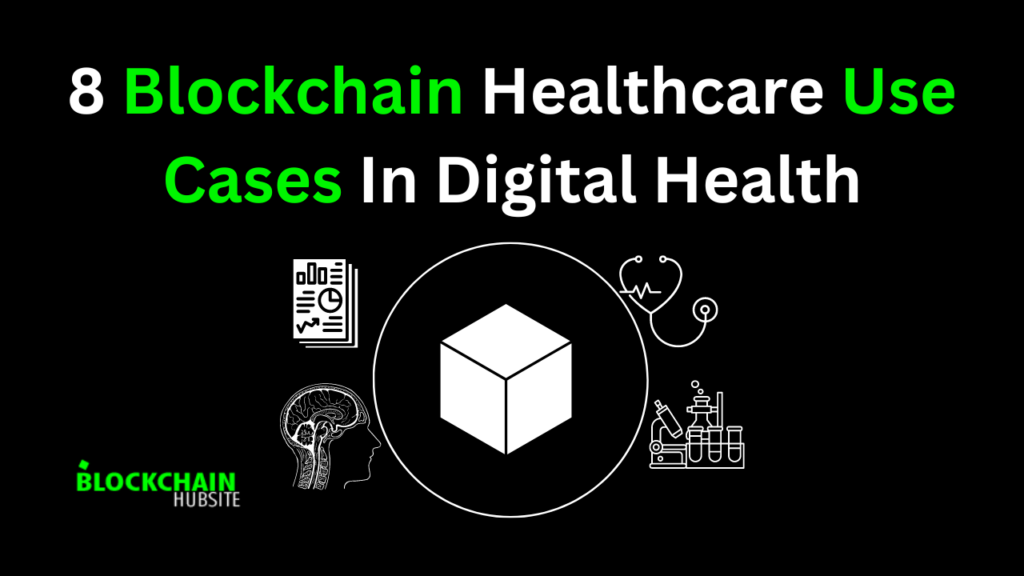
Table of Contents
Introduction
A blockchain is a particular type of distributed ledger; not all DLTs use blocks or chains to record transactions. The blockchain is an unbreakable digital ledger that keeps track of economic transactions. We can design it to track almost anything of value, not just financial transactions.
A blockchain, first called a “block chain,” is a list of digital records growing. We store these records in “blocks,” linked and kept safe by cryptography. These “blocks” of information are digital recordings that accumulate in chronological order. Each block in the chain includes data (like a Bitcoin transaction), a cryptographically hashed value, and a time stamp.
The blocks of hashed data depend on the block that came before it in the chain. This ensures that none of the data in the “blockchain” has been changed or messed with. Blockchains are chronological chains of blocks. Data mining collects and organizes data into blocks, each containing a certain amount of data. A cryptographic hash and timestamp serve as unique identifiers for each block.
Each freshly constructed block includes a hash of the prior block, creating a chronological chain from the first block in the blockchain (also known as the Genesis Block) to the most recent block. We repeat this process repeatedly to keep the network growing and working.
Now, this means that no financial institution or government has control over this decentralized record. Anyone with a good internet connection can view it. Many industries outside virtual currency exchanges utilize blockchain technology, including messaging apps, critical infrastructure protection, ride-sharing, cloud storage, etc.
Join us as we explore the depths of blockchain technology and determine what blocks are and how they add to the blockchain’s security, integrity, and inability to change. Whether you’re interested in blockchain or a seasoned worker, this blog post will help you understand how blockchain networks and their block structures work.
So, let’s go on this exciting journey and find the answer to the intriguing question: how many blocks are in a blockchain?
What Is a Block in a Blockchain?
A “block” in a blockchain is simply a data storage unit. The blocks in a cryptocurrency blockchain provide information about transactions. Adding the previous block’s hash to the next block’s beginning creates a chain of these blocks. Aside from making the data in the blocks immutable, it also ensures that their order is intact.

In short, the word “block” refers to files on a computer that store information about transactions. The name “blockchain” refers to the linear arrangement of these blocks that results in a potentially infinite chain of blocks.
This means that each block contains data on a specific blockchain transaction and that each freshly generated block is cryptographically linked to the one before.
The network of connected blocks contains all the transactional information created since a specific blockchain’s inception. The records, therefore, go back to the first block, sometimes referred to as the block zero or the genesis block. The block height is the total number of valid blocks created since the Genesis block.
To give just one example, a block in the Bitcoin blockchain consists of several different components. There is a timestamp, a reference to the block before it, and a record of the most recent transactions in each Bitcoin block. This indicator represents a cryptographic hash of the data in the prior block.
New blocks always carry the hash of the previous one, making them cryptographically connected. With this kind of layout, you can make a secure database that is hard to hack or change. The hash of the block serves as a kind of identification. The mining process creates a new hash for each block.
The block hash is the answer to a complicated math problem, and the miner who finds a correct answer for the next block gets the right to validate that block and all its transactions. Successfully mined blocks reward miners with new Bitcoins since mining demands a lot of processing power.
But sometimes, two or more miners will find a suitable block hash simultaneously. This means that the network will receive two different blocks. This makes two links that work against each other. To solve this problem, the people in the network (called “nodes”) will choose the chain that becomes the longest over time (has the most “accumulated work”). This results in the “stale” blocks of the other chain, which leads to its eventual discard.
Although blocks generally appear in the context of cryptocurrency transactions, they can also connect with other forms of digital data that we record on a blockchain.
How a Block (Blockchain Block) Works
Many transactions take place within a blockchain network. Keeping track of these transactions when using cryptocurrency allows the system to determine how much was used or not and who was involved. A block is a file containing all of the transaction records for a specific period and serves as the backbone of the blockchain network.
A block saves information. Many pieces of information are in a block, but it doesn’t take up a lot of storage room. It’s common for blocks to have the following components, though this can vary depending on the type:
Magic number: A magic number is a number with specific values that show that a block belongs to the network of a particular cryptocurrency.
Blocksize: Limits the size of the block so that it can only hold a certain amount of information.
Block header: Provides details about the block.
Transaction counter: A transaction counter counts the total number of transactions in the block.
Transactions: It is a list of all transactions occurring within a block.
Structure of a Block
Each blockchain has its unique block structure. The following is, however, a general outline of a block’s structure:

Here are the most essential parts of a block:
Block Height
Block Height-In a series of blocks, the block’s height indicates its position in the sequence. Block Height: 1 is the genesis block, the first block in the network.
Block Size
This is a 32-bit field with 4 bytes that tells how big the block is. It increases the size in Bytes. Ex – Block Size: 216 Bytes.
Block Reward
This field shows how much the miner gets paid when adding a block of transactions.
Tx Count: The transaction counter shows the number of transactions in the block. The field can be no bigger than 9 bytes.
Block Header
The block header is an 80-Byte field that includes the metadata or information about the block.
Let’s talk quickly about the six parts of the Block Header.
- Time: This is the digital time stamp of the block’s mining. Its purpose is to ensure the legitimacy of financial transactions.
- Version: This is a 4-byte field that shows the protocol’s version number. Most of the time, it’s ‘0x1’ for Bitcoin.
- Previous Block Hash: This is a 32-byte field with a 256-bit hash of the last block. The SHA-256 cryptographic hashing creates this hash. This helps to link the blocks in a straight line.
- Bits: This is a 4-byte field that shows how hard it is to add the block. It’s also called “difficulty bits.” PoW says that the block hash should be less than the amount of difficulty.
- Nonce: Nonce is a field with 4 bytes that holds a 32-bit number. These are the only things that can change in a block of transactions. Miners in PoW change the nonce until they find the correct block number.
- Merkle Root : Merkle Root is a 32-byte field that holds a 256-bit hash of the root. The hashes of the individual transactions that make up a block are combined hierarchically to create it.
Transactions
It is a field with an adjustable size that contains a list of all of the transactions that are present within the block.
The average number of transactions in a single Bitcoin block is around 2000. Each block is about 1MB in size. In blockchains, a block can be of different sizes and have other numbers of events. It depends on how busy the network is and how much communication costs.
Types of Blocks in Blockchain
In many blockchains, there are three distinct blocks: the Genesis block, the Valid block, and the Orphan block.
1. Genesis block
The term “genesis block” refers to the initial block in a blockchain and so explains how it gets its name. These blocks are the most essential part of the blockchain and are where its future history starts. In the process of developing Bitcoin, its creator, Satoshi Nakamoto, was responsible for mining the very first genesis block in the history of the cryptocurrency industry. On January 3, 2009, the day Nakamoto released his concept, this information became public knowledge. It started a technology revolution around the world that is still going on today.
The presence of the genesis block makes it possible for the blockchain to start making its history of operations or Transactions. This foundational block enables the newly generated block to be related to a previous state. This connection is what allows the blockchain to provide its immutability promise. This is possible because of technology like the Merkle Tree. Because of this, it is possible to associate the history of the blocks with a distinct hash attributable to those blocks. Any change, no matter how small, makes it impossible to check if the Merkle root (Merke Root) is correct, which can invalidate part or all of the blockchain’s history.
The genesis block also serves an essential purpose by letting the network’s nodes sync up with each other. Synchronization is only possible if all the nodes’ databases have the same origin block. This ensures everyone has the exact copy of the blockchain’s spread transaction book, a security measure.
“The angular stone” of blockchain technology is the genesis block. This “cornerstone” in the history of a blockchain is called the genesis block, and it occurs in every blockchain.
2. Valid blocks
All blocks that have been mined and added to the blockchain are considered valid blocks. Valid blocks are the building blocks of the blockchain. Each mined block needs confirmation from the network before it can be regarded as valid and reported as having solved its cryptographic task. Once consensus is established, the block is added to the blockchain and distributed to all participating nodes. This ensures that all computers in the network have access to the latest block and can act as verification points.
These blocks are essential to the functioning of the blockchain and its associated transactions. Each valid block contains a set of transactions validated with that block. Each Bitcoin block, for instance, includes an average of 2100 transactions. Thus, the valid block confirms all transactions. After that point, each new valid block added to the blockchain will verify the transactions that came before it. This ensures the complete safety of every block and transaction on the network.
Each valid block, of course, comes with its data structure to ensure validity. The structure includes the block hash, the Merkle Root, the timestampplatforms, the nuncio, the block transaction data, and the Coinbase. All of this is set out in a way that makes it easy for anyone to check any of the information.
3. Orphan blocks
Valid blocks not included on the blockchain are loose or orphaned. When two miners produce blocks nearly simultaneously or when an attacker with enough hashing power tries to undo a transaction, this is known as a “block race.” Network nodes must now consult their consensus protocol to determine which block should be considered genuine (and so added to the chain) and which should be regarded as orphaned.
The blockchain is always programmed to choose the longest chain in the network. In other words, the one with more information or transactions that have been processed. This safeguard is both straightforward and effective in dealing with the issue.
How Blocks Are Linked in a Blockchain
Several things work together in a blockchain to link the blocks together. Let’s look at some of the most important ways to link blocks.
Hashing and cryptographic functions
Using hashing methods and cryptographic functions is a vital part of block linking. The information in a block goes through a hashing process, which makes a unique hash. After that, the header of the following block contains this hash, which serves as a link between them.
Merkle tree
The linking of individual blocks in a blockchain also requires using a component known as a Merkle tree, also referred to as a hash tree. It’s a hierarchical data format that ensures data accuracy quickly and easily. A Merkle tree makes a single hash representing all transactions in a block by hashing and joining several transactions or data. The block header, which contains a link to the block’s content, is updated to include the consolidated hash.
Block references
In a blockchain, each block has a reference to the block’s hash before it. This makes a chain of blocks. Thanks to this reference, the blocks link together in a particular order, which also prohibits tampering with the chain’s history. By using the previous block’s hash, any change to a block would cause a difference in the next block’s hash. This would show that someone was trying to change the chain.
Ensuring security and immutability
Security and immutability in a blockchain rely heavily on linking blocks together. Here are various mechanisms that enable these effects.
Consensus mechanisms
Blockchain networks use consensus methods to ensure that the order of transactions and the addition of new blocks is correct and that everyone agrees. Proof of Work (PoW) and Proof of Stake (PoS) consensus techniques ensure that most network members agree on block validity before adding them to the chain. This consensus mechanism strengthens the blockchain’s security and makes it more challenging for hostile actors to manipulate the linked blocks.
Block validation
Before adding a new block to the chain, every node in a blockchain network checks to see if it is valid. The correctness of the cryptographic signatures, the Merkle tree’s validity, and the block header’s comparison to the preceding block’s hash are all part of this validation process. Blockchain networks preserve the integrity and reliability of the linked blocks by implementing stringent validation standards.
Chain of events
The linkages between blocks make sure that the blockchain is always the same. Every node in the network carries its copy of the blockchain, ensuring it is always accurate despite the continuous addition of new blocks. This synchronized process ensures that all parties have identical copies of the blockchain. This allows for trust and transparency in decentralized environments.
Factors Influencing Block Count
1. Block time
The time it takes to add a new block to a blockchain is called block time. It is crucial to determine the rate at which new blocks can be added to the blockchain and transactions can be confirmed.
The block time parameters of several blockchain networks are distinct from one another. As an illustration, Bitcoin’s block time is roughly 10 minutes, while Ethereum’s target is around 15 seconds.
| Blockchain | Exp. block time |
| Bitcoin Cash | 10 min |
| Ethereum | 10–19 s |
| Bitcoin | 10 min |
| Litecoin | 2.5 min |
2. Block Size
Block size is a significant amount of data that can be stored in a single block of a blockchain. How many transactions per second a blockchain network can process and store? The ability to contain more transactions in each block comes at the cost of increasing the blockchain’s overall size, which can cause problems with both network speed and data storage capacity.
When the volume of transactions and users on a blockchain network grows beyond what the current infrastructure can support, problems with scalability develop. If a blockchain cannot efficiently process many transactions, it may encounter delays, higher transaction fees, and a poorer user experience.
Researchers develop and execute many approaches to solve the problem of scalability. Some examples are:
- SegWit, or Segregated Witness : This update separates the transaction signatures from the transaction data. This makes each transaction smaller and lets more transactions fit in a block.
- Block size increases: Some blockchain networks have increased block sizes to accommodate more transactions in each block. However, increasing the size of the blocks in a blockchain network uses more resources and may make it less decentralized.
- Layer 2 solutions: These methods attempt to increase the capacity of blockchain networks by securely offloading some transactions from the main chain. State channels in Ethereum and the Lightning Network for Bitcoin are two such implementations.
- Sharding: Sharding is splitting a blockchain into multiple smaller networks, or shards, each of which handles a subset of the total number of transactions. This can significantly expand the blockchain’s ability to process transactions.
3. Forks
Forks in the context of blockchain are times when a blockchain network splits into two or more different paths, each with its version of the blockchain’s history. There are several potential causes for a network to fork, including protocol updates, changes to consensus rules, and internal conflicts.
Two distinct categories of forks within blockchain technology exist: hard forks and soft forks.
- Hard forks: A hard fork is a permanent split in the blockchain where the two versions cannot communicate. All members must update their software to the new version to continue participating in the forked network. With enough support and the use of the new chain, a hard fork can create a new cryptocurrency.
- Soft forks: A soft fork is an upgrade to the blockchain system that works with older versions. It adds new rules that work with the ones already in place, so nodes that need to upgrade can still participate in the network. However, the upgraded nodes will strictly adhere to the new regulations. Instead of creating a new chain, soft forks typically try to make enhancements or stricter regulations.
The effect of forks on the number of blocks varies on the type of fork and how the network and community respond to it. During a hard fork, the total number of blocks will split in two, with each fork keeping its count. Instead of breaking the blockchain in two, soft forks keep the same number of blocks in circulation because they are compatible with older protocol versions.
Conclusion
The number of blocks may change over time depending on the blockchain protocol and design. A blockchain is a distributed ledger in which data is “stored” in blocks, with each block representing a group of transactions and linked to the one before it using cryptographic hashes.
Blockchain data is reliable and unchangeable since new blocks are constantly added to the network. As the blockchain network works and expands, new blocks are added via a consensus mechanism, contributing to the technology’s decentralized and distributed character. For this reason, the total number of blocks in a blockchain will rise over time to reflect the dynamic nature of the underlying distributed ledger.
FAQs
1. What is Block 1 in blockchain?
The Genesis block is the initial block in a blockchain.
2. What is a typical block of a blockchain?
A blockchain block typically comprises data, a timestamp, and a cryptographic hash of the header from the preceding block.
3. How big is a Solana block?
Theoretically, the maximum block size on Solana is 128MB.
4. How long is one block in BTC?
A Bitcoin (BTC) block takes 10 minutes to complete.
5. How many transactions are in a block?
The number of transactions in a block can change based on the blockchain network. For example, the average number of transactions per block in the Bitcoin blockchain is about 2,500, but it can be as high as 7,000 or as low as 1,000.
6. Where is a blockchain stored?
A blockchain is stored across numerous nodes in a decentralized network.
7. How many nodes can be part of the same blockchain?
The total number of nodes in a blockchain network is highly variable and may exceed several thousand.




